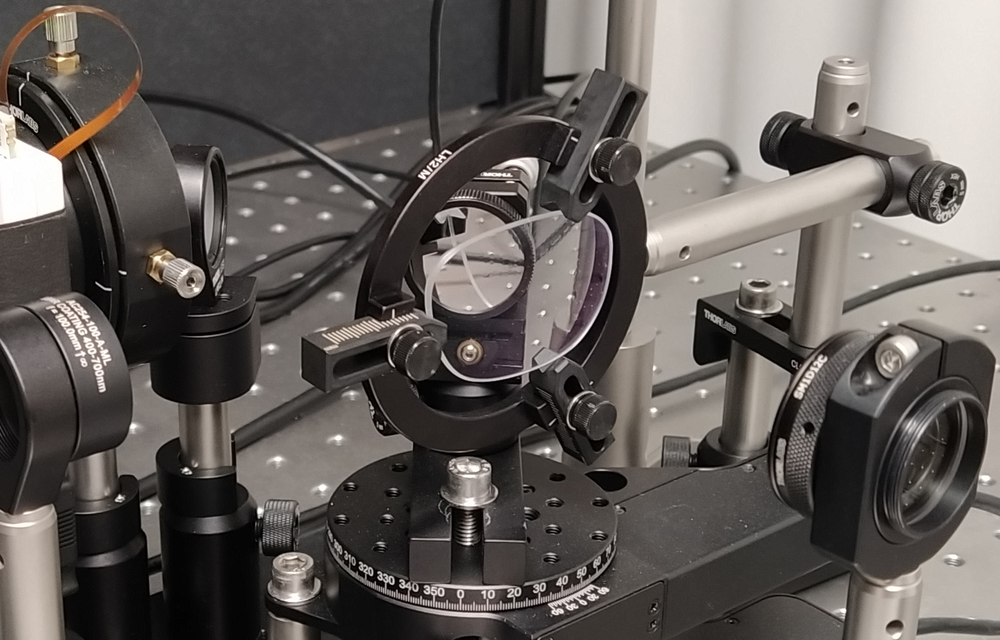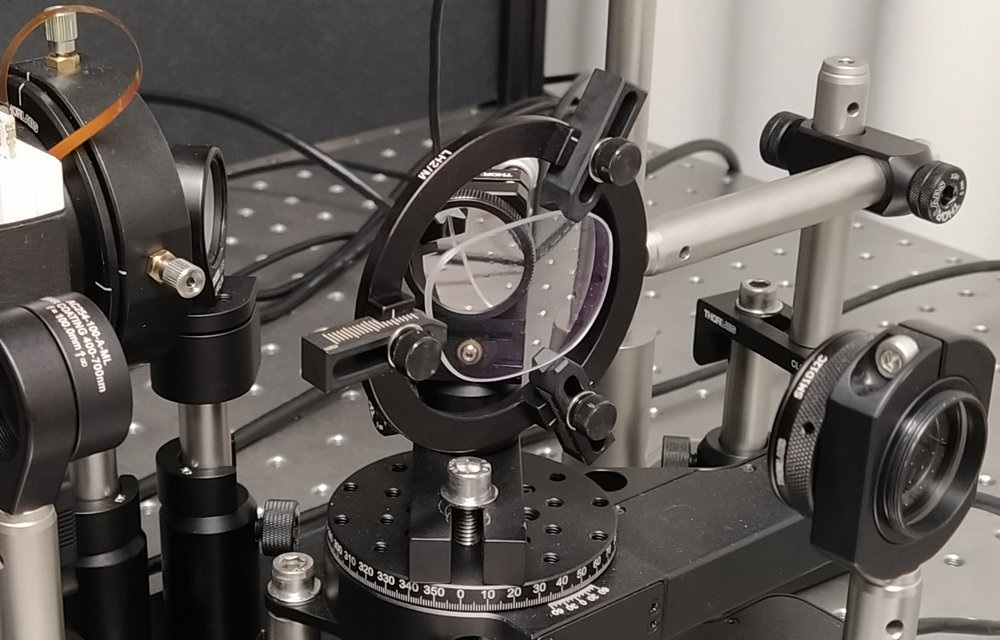Researchers Recreate a Nearsighted Eye
A team of researchers including Augusto Arias-Gallego at the University of Tübingen, Germany, has developed a device for mimicking the refractive errors of a nearsighted eye [1]. The team demonstrates the ability of this “artificial eye” to characterize the real-world performance of eyeglasses designed to slow the worsening of the condition in children. The team hopes that the insight gained with their system will aid in the development of more effective iterations of a potentially sight-saving technology. “By characterizing the prototype lenses in the lab, we can easily check if the designs are good candidates to slow myopia progression,” Arias-Gallego says. “That could help millions of children.”
Poor eyesight is on the rise. Today, one third of the world’s population suffers from some form of visual impairment, up from one fifth a decade ago. By 2050, estimates indicate that the fraction will increase to over one in two. The most common vision condition is nearsightedness, also known as myopia, which leads moderate sufferers unable to resolve objects more than a few feet away. When left untreated myopia can develop into sight-threatening conditions such as retinal detachment.
In order to see the world in all its razor-sharp glory, light entering the eye must focus on the back of the retina. In those with perfect vision, muscles around the lenses of their eyes tighten or relax, shaping the lens so that light converges on the retina. For those with myopia the light focuses at a point in front of the retina, making distant objects blurry.
Regular eyeglasses can fix this refractive error by shifting the focal point, but this adjustment only works for light that hits the center of the eye. Light around the periphery gets focused behind the retina, which can worsen myopia. “[Clinicians] think that focusing the image behind the retina promotes eye elongation, making the person more nearsighted” Arias-Gallego says. “And if the eye is still growing, this elongation can get worse and worse, which impacts the biomechanics of the eye and can lead to serious conditions that aren’t easily corrected.”
Various treatments exist for slowing the progression of myopia. These include drugs that help relax the muscles controlling the lens and special contact lenses that change the shape of the cornea. But those treatments can be tricky for young children who may resist having liquid or lenses put in their eyes. In addition, Arias-Gallego notes that the side effects of the drugs remain unclear and taking contact lenses in and out increases the chance of getting an eye infection. That is where myopia-correcting eyeglasses come in. “Specially designed spectacles are the safest myopia treatment and the least invasive,” Arias-Gallego says.
Myopia-correcting glasses work in the same way as regular ones, but they deal with peripheral light differently. In so-called DIMS lenses, the peripheral light is focused in front of the retina using microlenses. In DOT lenses, the peripheral light intensity is reduced using light-scattering elements called microdiffusers.
Scientists think the defocusing of DIMS lenses and the contrast reduction of DOT lenses both slow eye growth and stop myopia progression. But the exact mechanisms by which DIMS and DOT lenses work remain unknown, says Linda Lundström, who studies visual optics at the KTH Royal Institute of Technology, Sweden. “The average efficacies of [all myopia] interventions seem to be similar although the treatment mechanisms can be different.”
To explore how the different treatments work, Arias-Gallego and his colleagues developed a method for characterizing the optical properties of myopia-correcting lenses using an artificial myopic eye. Their setup consists of a rotatable source that shines red light into a target lens from different angles. After passing through the lens, the light is directed into a spatial light modulator (SLM), which modifies the amplitude and phase of the incoming light before transmitting it to a detector. The team programmed the SLM so that it reproduced the refractive errors of a myopic eye.
The researchers studied the focusing and scattering properties of both types of myopia-correcting lenses. They found that both technologies defocused the light at the periphery with respect to the retina and reduced the light’s intensity at the periphery. This defocus was significantly greater for the DIMS lenses, which created sharper, brighter images in the periphery than the DOT lenses. They also found that for the DOT lenses, the contrast reduction depended on the amount of light striking the pupil, with a higher reduction seen under brighter conditions.
Further experiments and clinical trials are needed to determine whether this contrast dependence impacts the efficacy of the DOT lenses. In the meantime, the researchers are using their setup to characterize the eye’s response to updated versions of myopia-correcting lenses that are still in development. “We are already testing new prototypes,” Arias-Gallego says. Ultimately, Arias-Gallego and his colleagues hope that the insights gained from these experiments “will pave the way to more effective treatments,” he says.
–Katherine Wright
Katherine Wright is the Deputy Editor of Physics Magazine.
References
- A. Arias et al., “In-depth optical characterization of spectacle lenses for myopia progression management,” Optica 10, 594 (2023).





